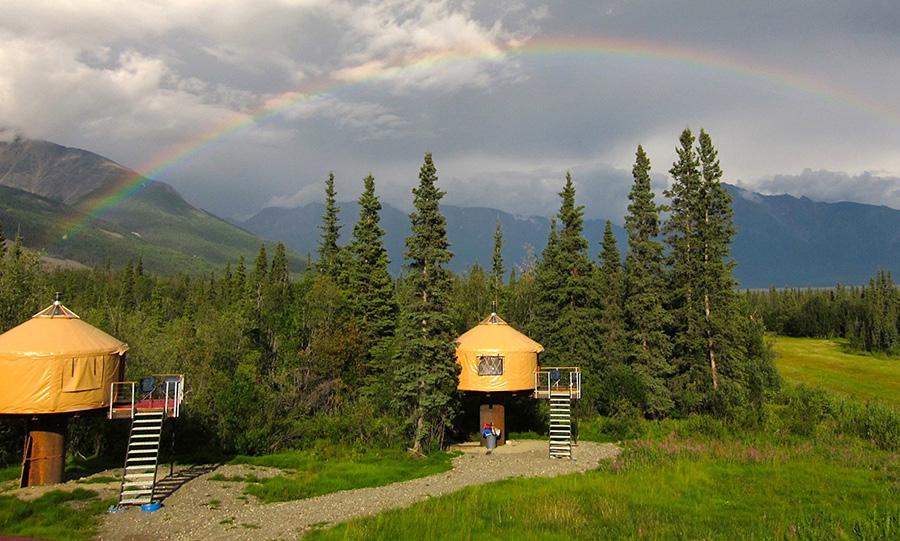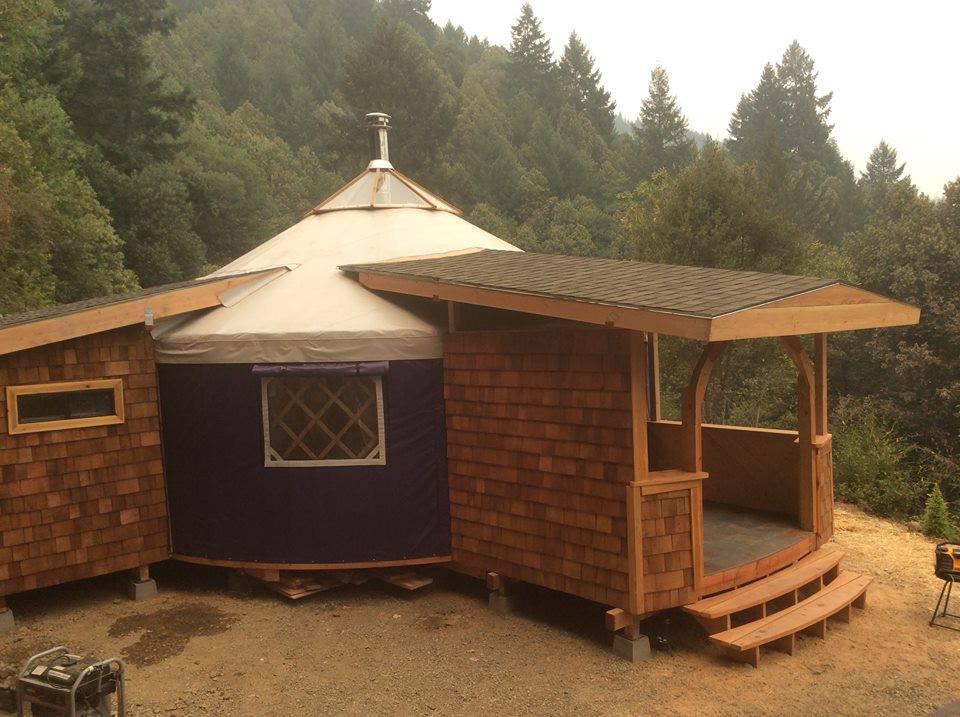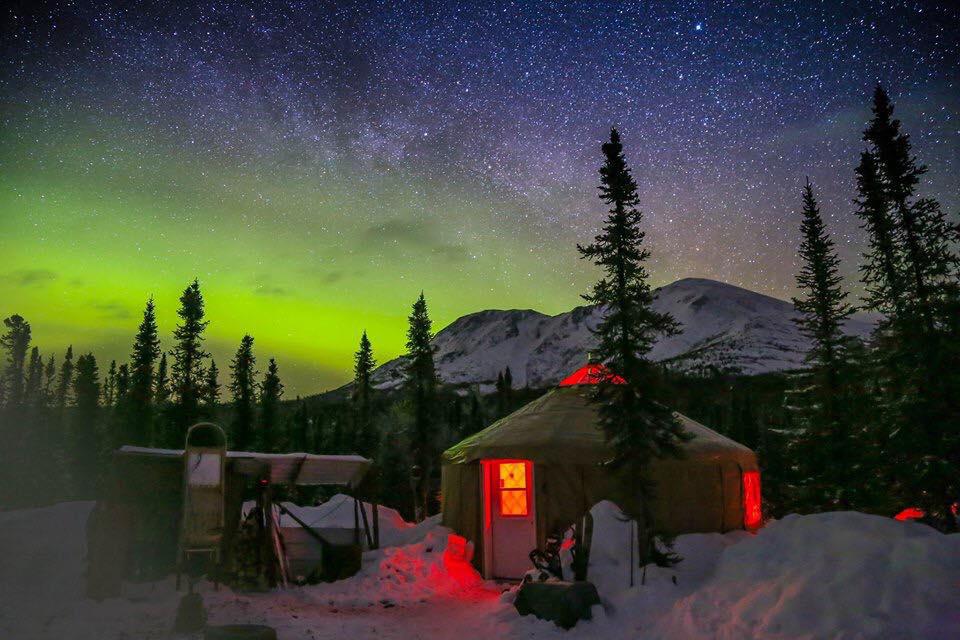
6 minute read
Nomad Shelters
Living in a Round
Founded in 1995 by Lee and Jess Tenhoff, Nomad
Shelter is not only one of the most authentic yurt manufacturers, but one of the most authentic businesses in America. From living and working in their yurt to giving other people the opportunity to do the same, we spoke with co-founder Jess Tenhoff regarding their business. “This has been a lifelong passion for us,” she says, “Lee and I moved into a yurt of our own design in 1987 and what started as a small family business now ships handcrafted yurts across the world for a variety of different uses and a range of different environments.”
NOMAD SHELTER Even though Lee and Jess have been building yurts for over twenty years, they still have the capacity to look at every yurt they manufacture as a bespoke, stand-alone project. Overseeing each phase of design and construction they work closely with clients to personalize and individually craft each one. “It is the personal side of the business that keeps us going,” Jess says, “As well as having the reputation for being the leading yurt designers. We love working with people and discussing their plans and dreams and doing our bit to shape them.” As they are handmade from scratch, the creation of each yurt requires their full attention, experience and skill to create something that the client will fall in love with. As anyone who has worked with wood will tell you, there is a knowhow involved in creating such structures that counts for everything. “You don’t make wood do anything, you negotiate with it,” Jess says.
YURT USES Over the last twenty years, Nomad Shelter have perfected the steps needed to create the perfect personalized nomadic abode. In recent years, thanks to the explosive popularity of glamping things have gotten very busy. With current and up-and-coming destinations vying to offer the

coolest and most luxurious accommodation some businesses have abandoned their roots and turned to automation and commercialisation to capitalise on the demand. Lee and Jess have gone the other way and, instead, have focused even harder on the individual customer’s needs and desires.
This sentiment goes further than just the hospitality industry, as it is becoming ever more apparent that people do not need to invest in bricks and mortar as a home and that nomadic, standalone accommodations can be perfect for many different environments. “It is so important that people think outside the box to explore all the options,” Jess says, “And give themselves the chance to visualize what it is they want, and how living in a round home without walls could transform their relationship between them and their environment whether the yurt is for personal or commercial use.”
FOR A BUSINESS Going well beyond merely accommodation for a glamping site, hotel group or safari, yurts offer a greater flexibility and uniqueness to any business. If a business requires a versatile, cost effective


and captivating structure, as many businesses do, the yurt presents a richly inviting and economical space.
“Low impact designs, easy set-up and a range of sizes means that a yurt can provide an effective space be it for a hospitality purpose or to create an inviting and mesmerizing office space to work out of,” Jess says. Ultimately, when you combine the yurt’s natural adaptability and Nomad Shelter’s willingness to work with each customer you come to a scenario where whatever can be imagined can probably be built.
WHAT CAN CLIENTS EXPECT? Jess says that taking the time to communicate with a client is an essential part of their process. Before Nomad Shelter begins working, they need to know exactly what the customer wants. Once design and manufacturing have taken place the yurt parts are assembled in their factory and can be shipped internationally to be assembled. With this in mind the stove and the yurt platform are not included in their service but a list of materials, a platform diagram and dimensions for the stove are provided as well as a setup manual and phone support. “The yurt platform and not just the deck, should be factored into client’s overall budget,” Jess says, “As it can range from a few hundred dollars to a few thousand dollars depending on the size of the yurt, materials, location and builder.”
Yurts have an 8-16 week turn-around time and all yurts have a borough tax of $37.50.
LIVING IN THE ROUND There is such a security and calmness to be found in a yurt that this could explain why it is such a popular accommodation choice across so many different nations. And, while the detailed design and manufacture may differ from country to country depending on the materials available, the layout, that of a round accommodation without walls has proved to be popular throughout history. And there is evidence to suggest psychological benefits of living in a round room instead of a walled-up compartment.
WHAT MAKES A YURT? The yurt is comprised of several different layers that make it the cosy, weather proof shelter that has served nomadic tribes in many different countries for centuries.
While the external appearance of a Nomad Shelter yurt is traditional, the manufacturing process uses modern materials that are built to last. This includes a Duro-last roofing membrane made of 40ml polyvinyl as the first layer of the cover. This is used over the entire yurt for the standard cost. The reason being is that it doesn’t mildew or degrade in sunlight or exposure and it is completely flame retardant.
Drafts and leaks are prevented with additional layers and the lattice which gives the yurt its shape is made of either white spruce or Douglas fir. This is held together with aluminium rivets with support columns and rafters to provide added strength for the larger tents. Strength and durability are very important. “The Nomad Shelter lattice is structurally engineered with this added dimensional strength to support the rafters,” she adds, “It can handle a great deal of snow and winds of up to 100 mph without the need of vertical supporting posts.” Rafters have wooden connections to the central compression ring which are designed to insert in directly for extra strength. As there are no pin connections there is no torsion or twist in the frame. Nomad Shelter central compression rings are also layers thicker and a full foot wider on each size than any other design. These robustly engineered rings ensure the compression from the rafter connection translates into an incredibly strong roof, while also serving as a beautiful design feature.

What follows is insulation and Nomad Shelter only uses the insulation that they know works the best. It includes reflectix double foil backed bubble wrap and this is lined with a polyester mildew and fireresistant fabric.
“There are many people in Alaska living with the Nomad Shelter liner as insulation for their primary residences,” Jess points out, “We use it in our own residents in Homer, Alaska.”
WEBSITE: www.nomadshelter.com
TELEPHONE: 001 907-235-0132











